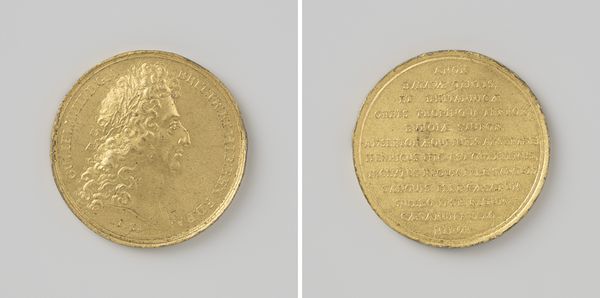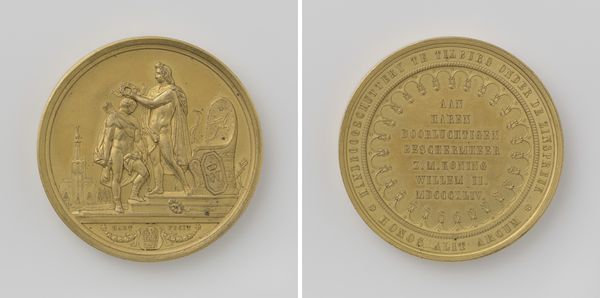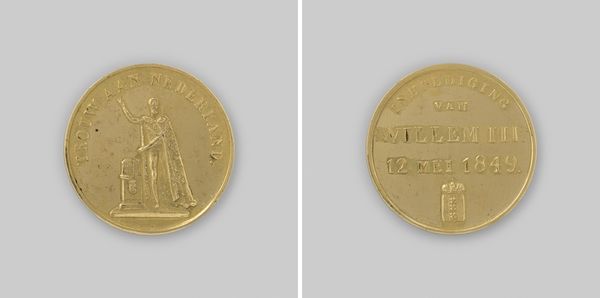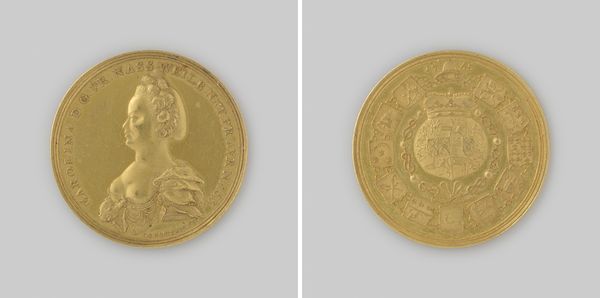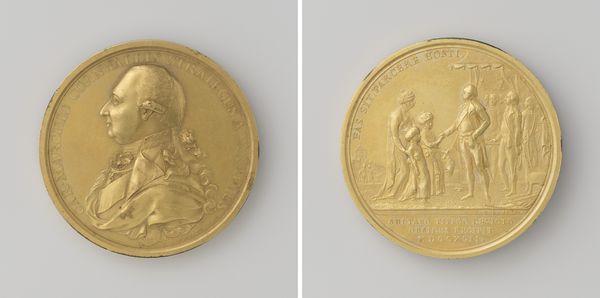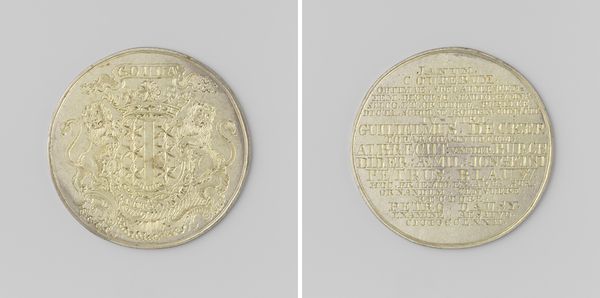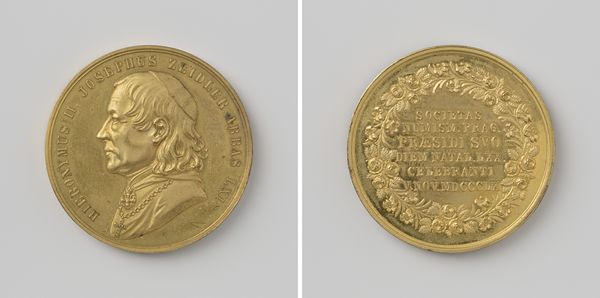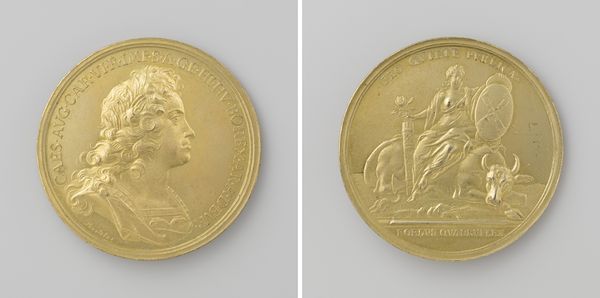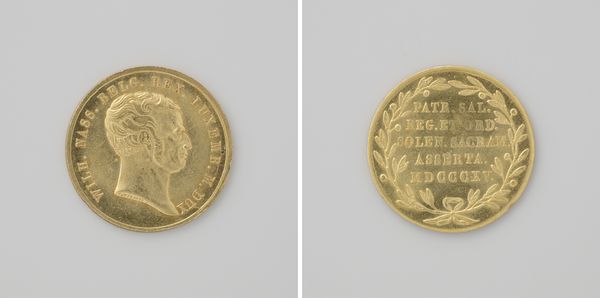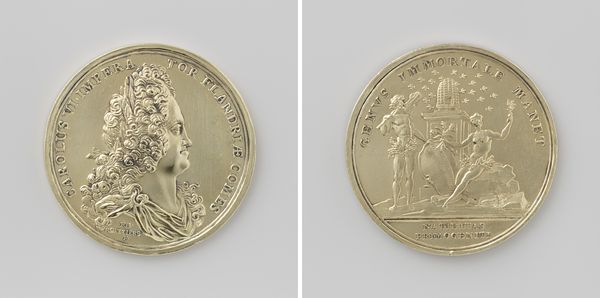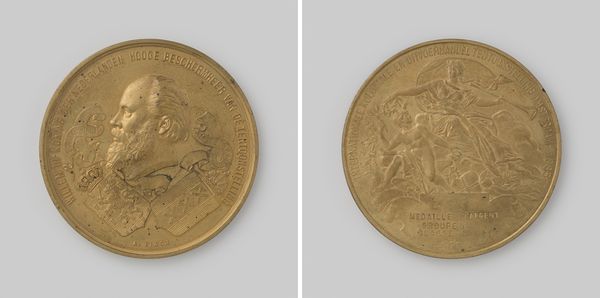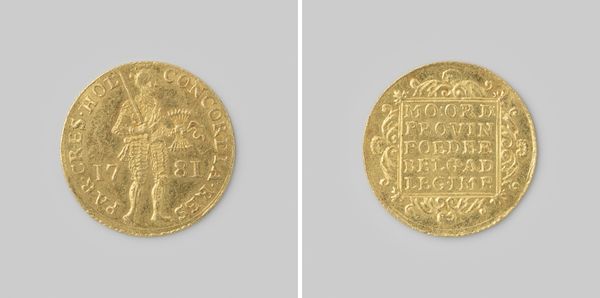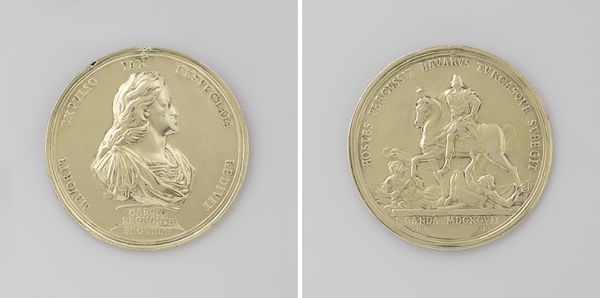
Tweehonderdjarig bestaan van het Athenaeum te Amsterdam 1832 1832
0:00
0:00
metal, engraving
#
portrait
#
neoclacissism
#
metal
#
history-painting
#
engraving
Dimensions: diameter 5.1 cm, weight 54.03 gr
Copyright: Rijks Museum: Open Domain
Curator: So, this is a commemorative medal by David van der Kellen, made in 1832. It marks the bicentennial of the Athenaeum in Amsterdam. Editor: It's interesting how the figures are rendered in such detail on this metal surface. What strikes me most is its connection to the neoclassical movement... the rigid posture, the almost idealized smoothness of the metal and characters. How do we see that reflected in the work? Curator: A great observation. Think about the production process for this medal. Consider the economic forces involved in commissioning such a piece, the engraver's role, and the very material used - gold, a marker of value and prestige. It moves beyond the visual language of Neoclassicism and allows us to unpack what exactly a commemorative token signified in that social and political environment. Editor: That's a compelling way to consider this object, the inherent value of the material versus the artistic design and labor. It's as much a celebration of craftsmanship and the societal value of education as it is about art. Curator: Exactly. Furthermore, what about the role of classical imagery itself in communicating social and educational ideals at the time? How did using specific materials add another layer to that understanding of art? Editor: It almost feels like the artist made the materials the primary focus as a deliberate comment on cultural ideals of craftsmanship and knowledge. I'll definitely have to keep the production in mind next time. Curator: Remember that examining the art material brings more understanding on the socioeconomic situation of the time.
Comments
No comments
Be the first to comment and join the conversation on the ultimate creative platform.
